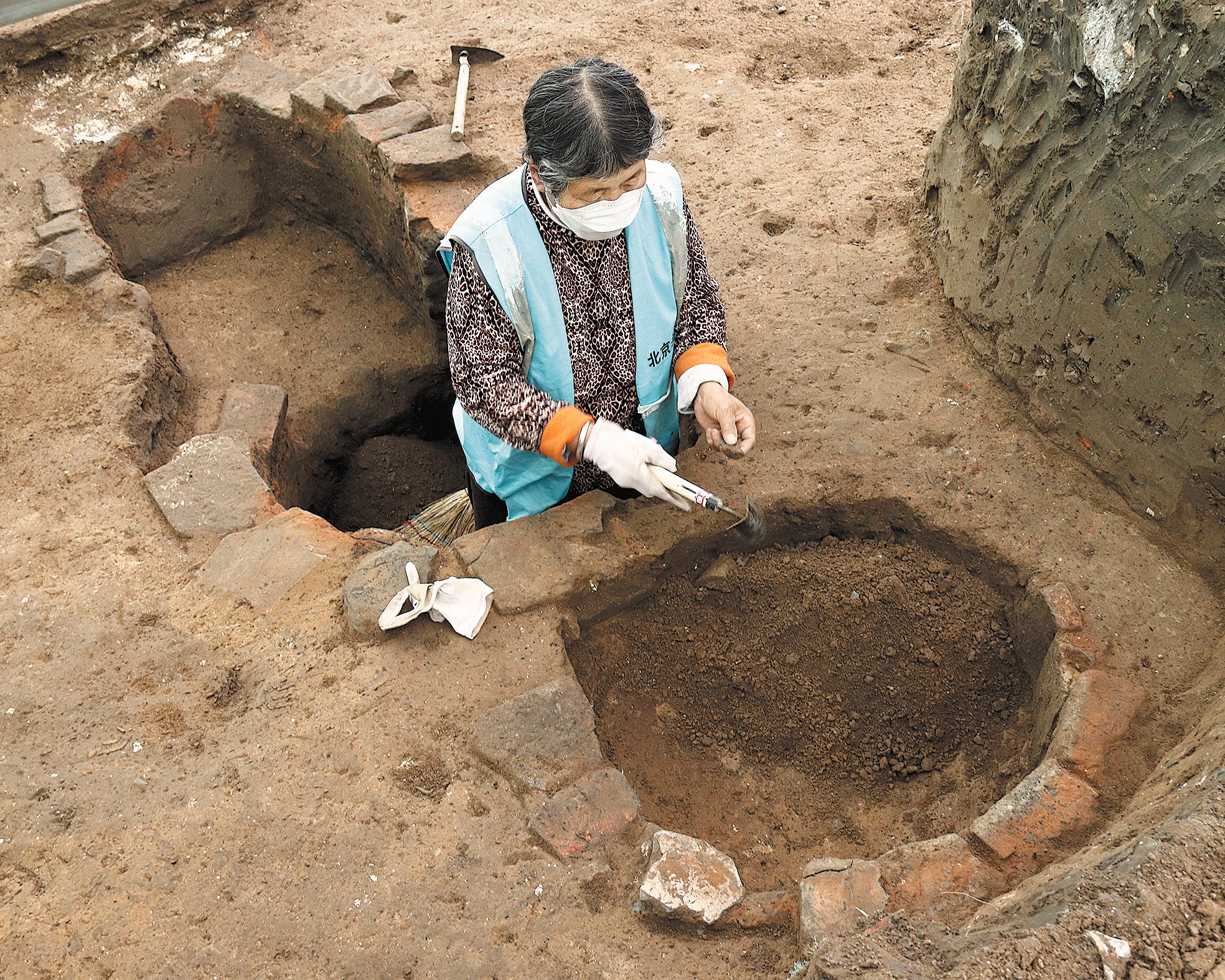City slowly reveals its history
THE ARTICLES ON THESE PAGES ARE PRODUCED BY CHINA DAILY, WHICH TAKES SOLE RESPONSIBILITY FOR THE CONTENTS

The early story of Beijing grows, as initial incarnations of the national capital gradually emerge from beneath the ground.
As it celebrates 2023 as its 870th anniversary as the Chinese capital, archaeological researchers have stepped up efforts to clarify this history.
Large-scale foundations and precious cultural relics, such as jade books, porcelain, mirrors, pottery figures and building elements have been discovered at the Zhongdu (meaning “the central capital”) site, which dates to the Jin Dynasty (1115-1234), the National Cultural Heritage Administration said.
Zhongdu was mainly located in what are now the Xicheng and Fengtai districts. The current excavation in Xicheng district covers an area of 183,000 square feet, and was begun by the Beijing Institute of Archaeology in 2020.
The remnants of architectural complexes from two different periods have been discovered. The earlier complex dates back to the late Liao (916-1125) and the early Jin dynasties, while the later complex dates from the middle to late Jin Dynasty, possibly even the early Yuan Dynasty (1271-1368), according to Wang Jihong, the researcher at the Beijing Institute of Archaeology responsible for this dig.
The earlier complex, which has a seriously damaged base, was originally a courtyard enclosed by a winding corridor. The later site has a clear, complete layout, with two large symmetrical palaces in the north and south, and two symmetrical side rooms in the east and west.
According to Wang, the No 1 building base in the southern part of the later complex is a little smaller than the No 9 building base at the Taizicheng site in Zhangjiakou, Hebei province, and of a similar size to the palace of the shrine relics in Antu county, Jilin province, both of which have been identified as Jin royal architecture. This suggests that the No 1 base was also for royal use.
Highlighted artefacts unearthed from this site provide further proof. For example, archaeologists have found jade books recording the deaths of Jin royalty and an official’s seal, showing that Jin-era Zhongdu was a political centre for the dynasty, Wang said.
A large amount of high-quality porcelain produced at famous kilns like the Jun Kiln, in what is now Yuzhou, Henan province, and the Ding Kiln, in what is now Baoding, Hebei province, has been unearthed. Some display features of the Southern Song Dynasty (1127-1279) and Goryeo Dynasty (918-1392) in Korea.
“The porcelain finds are evidence of the highly developed manufacturing of the Jin Dynasty and busy commercial activities in the city. They also prove that Jin Zhongdu was a commercial centre, with its influence reaching neighbouring areas,” Wang said.
Articles of daily use and for entertainment, such as chess pieces, inkstones, incense burners and combs, have also been found.
Established by the Jurchen people who overthrew the Liao Dynasty, the Jin Dynasty once occupied a vast swathe of what is today’s northern China. They established a capital in Shangjing (Upper Capital) in present-day Harbin, Heilongjiang province, then moved it to Zhongdu in 1153.
Discoveries from the site illustrate the historical process that followed the move from Shangjing to Zhongdu. The large number of artefacts show the material achievements of the city at the time and vividly showcase the technological development level, art forms, and social life under the Jin Dynasty, Wang said.
“This provides plentiful evidence for the study of architectural craftsmanship, urban layout, handicraft development, and commercial trade during the Jin Dynasty.”
Subscribe to Independent Premium to bookmark this article
Want to bookmark your favourite articles and stories to read or reference later? Start your Independent Premium subscription today.